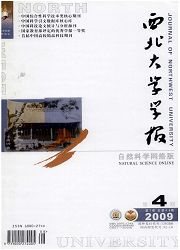

 中文摘要:
中文摘要:
目的通过陕西2008年1月10~28日持续低温阴雪天气的诊断分析研究,总结异常低温阴雪天气发生的发展环流特征,为天气分析预报提供有益的预报思路。方法应用天气动力学原理和动力诊断方法。结果发现持续时间长、降雪量大、降雪日数多和严寒日多、积雪范围大是上述低温阴雪天气的主要特点;乌拉尔山—中亚阻塞高压稳定,极地冷空气不断南下使得东亚大槽得以稳定加深,是陕西持续低温阴雪天气的大气环流特征。结论乌拉尔山—中亚阻塞高压异常发展和长时间维持,使强冷空气不断沿蒙古高原东南下,陕西始终处在地面冷高压底部偏东气流中,青藏高原到孟加拉湾的低槽为持续降雪提供了大量的水汽,强降温与近地面强冷平流有密切关系,而当冷空气从蒙古经华北南下时,华北到河套东部始终维持的偏东气流受地形强迫抬升,加强和维持了陕西的低温雨雪天气,并形成对西南暖湿气流的拦截和抬升。
 英文摘要:
英文摘要:
Aim By analyzing the circulation features of the case that happened in the winter of 2008 in Shaanxi Province and synthesizing the anomalies in low temperature and snowy weathers,it is to provide helpful ideas for weather forecast and predictions.Methods Weather dynamics and diagnostic methods.ResultsIt is found that such low-tempeature and snowy weather bears the characteristic of long lasting period,heavy snow fall,more days with snowy and extreme cold weather,and big scope of snow.The cold air from the North Pole caused by blocking high in Ural makes the East Asia Trough stronger and more steady,which forms the basic atmospheric circulation condition of low temperature overcast and snowy weather in Shaanxi Province.Conclusion In winter,water vapor transportation is well involved with the low trough located above Tibetan Plateau and Bay of Bengal.There is a cold advection center in the ground layer,and when the cold air goes southward from Mongolia via Northern China,the eastward air current in Northern China and Hetao is elevated by the landform and holds up the warm and wet airflow from southwestern regions.This typical circulation condition enhances the low temperature and snowy weathers over Shaanxi.
 同期刊论文项目
同期刊论文项目
 同项目期刊论文
同项目期刊论文
 期刊信息
期刊信息
